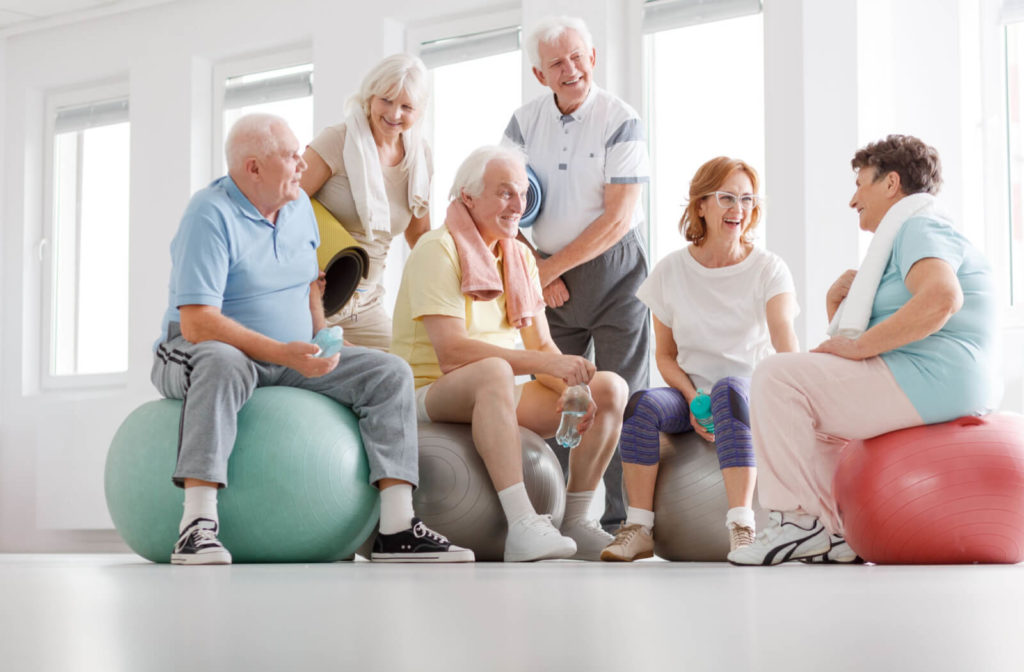Researchers have long studied the effect diet and exercise have on our quality of life, and there is virtually no doubt that staying active is crucial to maintaining your overall well-being.
However, is it possible to exercise too much as a senior? Can over-exercising increase certain risks as you age? What are some of the most common exercises you do to keep fit and maintain your quality of life?
Exercise and healthy living are important at any point in life, but active living can take on a new form as you age. Today, we’ll determine how much exercise may be best for you, why you should exercise, and explore some safe exercise activities you can do at home or in our wonderful independent living community. Ultimately, your exercise limit depends on your fitness level and lifestyle.
To learn more, please feel free to contact us or schedule a tour. Approach your life in a brand new light today.
Can Over-Exercising Affect Your Health
Let’s address the elephant in the room: how much exercise is too much for seniors?
The answer to this question ultimately depends on how much you exercise and your quality of life. If you’re the type who consistently works out every week, you might have a higher tolerance for more intense exercises. However, if you’ve been sedentary for most of your life, intense exercises will be harder for you to do.
According to a CDC study, researchers found excessive endurance exercises (about 7.5 hours a week) could negatively affect cardiovascular health. Still, the study suggests that high-level athletes were the ones at risk for these issues, not seniors.
So, How Much Can Seniors Exercise?
To help seniors stay healthy and active, the CDC recommends:
- 150 minutes of light aerobic exercises or 75 minutes of vigorous exercises a week
- Muscle-strengthening exercises 2 times a week
- Balance-improving exercises 3 times a week
However, not everyone can commit to this type of exercise routine because of their physical limitations, so please speak to your physician about how much exercise would be appropriate for you.
A good rule to follow is to remain active as much as possible. Even if you don’t get an entire workout in, some physical activity is better than none.
Risks of Over-Exercising
Over-exercising affects everyone differently, so make sure you speak with your doctor about the exercises you should perform and how often. Otherwise, over-exercising could lead to:
- Physical burnout and exhaustion
- Increased bouts of sickness and infection
- Sleeping problems
- Loss of stamina while working out
Why Exercise Is Important for Seniors
On the other hand, exercising plays an important role in your overall quality of life. By keeping up with a regular workout routine and combining it with healthy eating, you could help manage health problems, improve mental health, and reduce risk of injury.
Manage Health Problems
Regular exercise has been proven to help address various physical health concerns. Some of the most common include heart disease and diabetes.
However, according to the CDC, regular exercise could also lower the risk of developing a range of different cancers, including those that affect the:
- Bladder
- Breast
- Colon
- Esophagus
- Lung
- Stomach
Improve Mental Health
Studies have shown that exercising can also improve overall mental stability and wellness.
Scientists have discovered that exercising releases endorphins into your bloodstream, a hormone your body uses to help you reduce stress, alleviate pain, and generally enhance your mood.
However, working in groups like a spin class can boost your mental health. Group exercises are a great way to enjoy social interaction and connect with your community.
Reduce Risk of Injury
Exercise doesn’t just help manage your well-being; it also helps reduce your risk of experiencing injuries.
According to one study, regular exercise can help reduce how much seniors fall by 23%, lowering the risk of fractures, bruises, and head trauma that will need hospital-based treatment.
Types of Safe Workout Activities
Now that we’ve looked at why exercising is important to your health and wellness, let’s look at some safe workouts you might want to look into if you’re an older adult. As always, we recommend speaking with your doctor about what types of exercises may be best for you, but some of the most common can include:
Aerobic Activities
You should aim for at least 150 minutes of moderate aerobic activity a week or 75 minutes of vigorous aerobic activity. Some of the most common aerobic exercises include:
- Walking
- Jogging
- Swimming
- Cycling
- Water aerobics
Strength & Conditioning
Strong muscles can help you carry your body weight and manage your risk of falling. The CDC recommends strength exercises twice a week, during which you can perform:
- Body weight exercises
- Resistance band exercises
- Weight training
Some hobbies also provide some strength exercises without you even realizing it, like gardening. Remember, you don’t have to go to the gym to get the exercise you need.
Balance Exercises
Balance exercises are also important for reducing your risk of falling as you get older. Some of the most common balance exercises can include:
- Yoga
- Back, core, and leg exercises
- Walking backward
Combine Your Health & Happiness
Sometimes, it can be hard to get the exercise you need if you also have to balance other responsibilities while living at home. Independent living can help take care of some of the more time-consuming aspects of your life so you can focus on what’s best for you and your well-being—like regular exercise! Our fitness center offers a stunning array of exercise equipment, and we regularly host various fitness classes for a range of interests. If you’re ready to see how Bluff View Estates can help enhance your quality of life, contact us or schedule a tour today!



